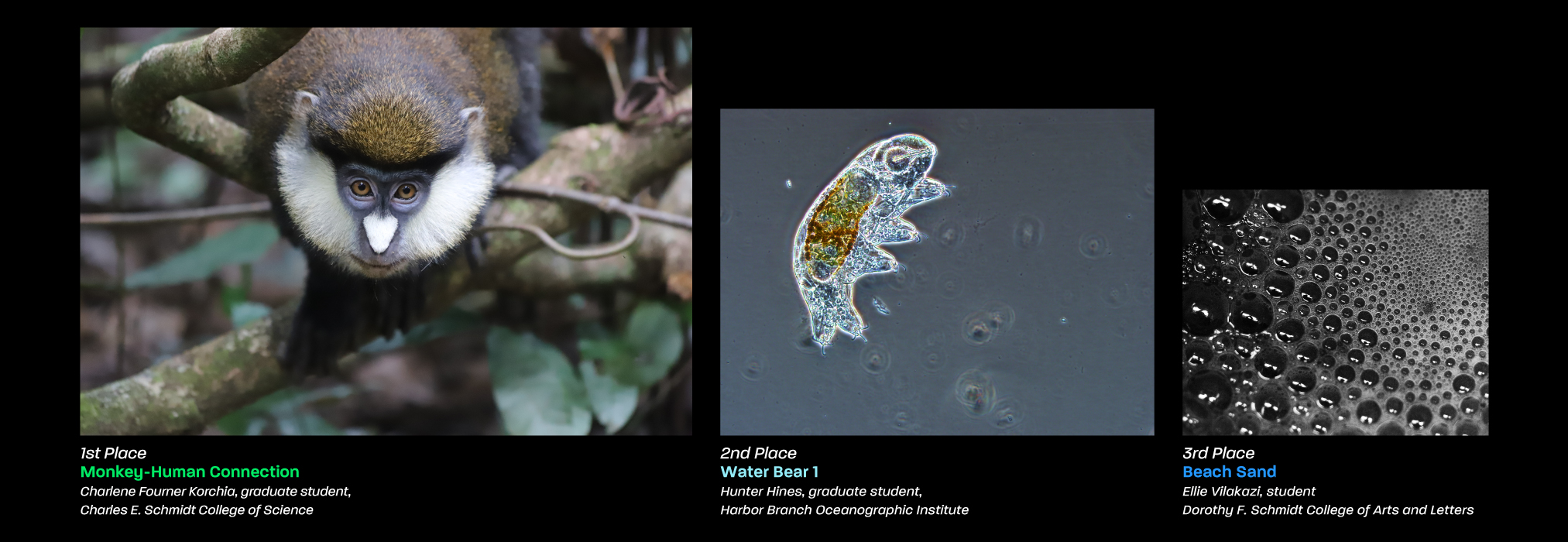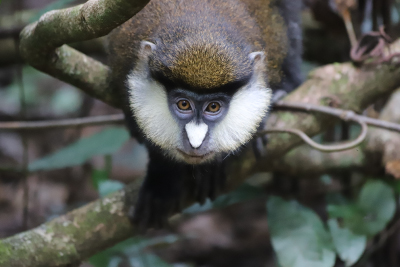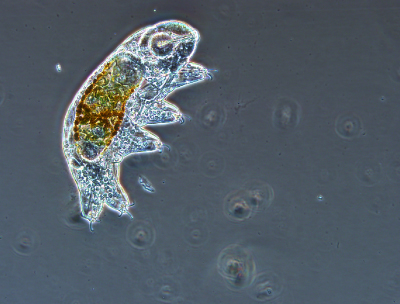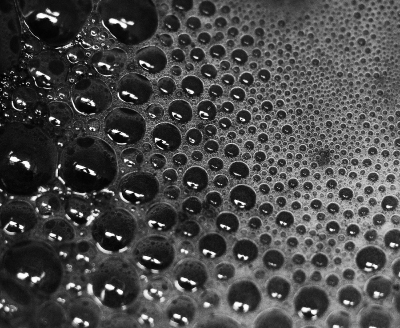Art of Science
By Cammi Clark
Research in Focus
In an effort to highlight the cutting-edge research across the colleges, while engaging and educating others in all the unique research taking place at FAU, the Division of Research hosted the first Art of Science photo contest for all members of the FAU community - students, faculty and staff.
Almost 150 submissions poured in showing research in the field, in the lab and across all disciplines. For example, the first-place winner, Charlene Fournier, works with Kate Detwiler, Ph.D., an associate professor in the Dorothy F. Schmidt College of Arts and Letters. In 1994, Detwiler was the first to provide genetic evidence that two distinct species of monkeys inhabiting Gombe National Park, were mating and producing hybrid offspring.
Six judges elevated more than 35 photo finalists, which will soon be on an exhibit in a variety of locations, including outside the Galleries in the Dorothy F. Schmidt Performing Arts Center. For a list of exhibit details, and to see all finalists, visit fau.edu/research/art-of-science.
Judges included:
• Adlai Moss, assistant director of graphic design and marketing, College of Engineering & Computer Science
• Ata Sarajedini, Ph.D., professor of physics, dean of Charles E. Schmidt College of Science
• Katherine Jones, director of communications, College for Design and Social Inquiry
• Sharon Hart, assistant professor of photography, College of Arts and Letters
• Patricia Liehr, Ph.D., RN, Schmidt distinguished professor, associate dean for nursing research and scholarship, Christine E. Lynn College of Nursing
• Melanie Lorenz, Ph.D., assistant professor of marketing, College of Business
If you would like more information, please contact us at dorcommunications@fau.edu.
The is a picture of Ice, a red-tailed monkey from the Mkenke valley group A, which is a mixed-species group between red-tailed monkeys (Cercopithecus ascanius), blue monkeys (C. mitis) and their hybrids, in Gombe National Park, Tanzania. Specific facial features, such as a white nose spot in the red-tailed monkeys, make individuals recognizable. Ice is a subadult male close to being sexually mature. He is at the edge of dispersing from his natal group to find non-genetically related females for reproduction. This photograph was taken during a field season in May 2019, in the goal of creating a photographic database for the creation of a facial recognition software for individuals in our study group.
A freshwater Tardigrade (water bear) magnified 400 times. The photographer collected this micro animal from a freshwater spring in Florida. The animal is full of algae, and imaged using phase contrast microscopy. These famously tough micro animals have eight legs with claws, and the ability to survive in extremes of various conditions (including temperature and space). This creature was photographed as part of photographer's doctoral research at FAU's Harbor Branch Oceanography Institute, investigating microbial ecology in Florida.
A researcher in the FAU Geoscience Department is working to find out how beach sand affects sea turtles. Sand samples are collected from beaches in Boca Raton all the way up to Jupiter. Samples are then brought back to the Coastal Studies Lab, put through several sieves, and weighed. The image above shows the next step which is to put the sand into a diluted hydrochloric acid solution in order to dissolve the calcium carbonate fraction (e.g., shells), a process that produces the bubbles seen here. The purpose of this step is to determine the relative mineral composition of the beach sand.



